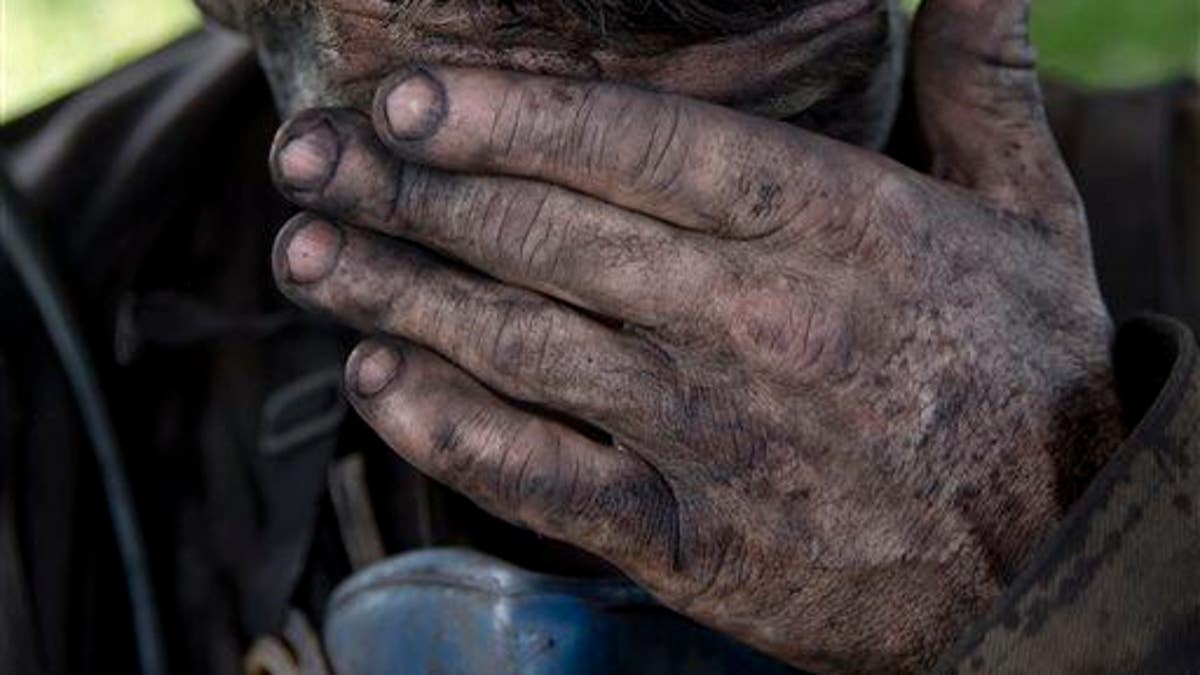
In this picture taken on May 20, 2014, a Ukrainian miner wipes his face after finishing his shift at a coal mine in Donetsk, Ukraine. (AP Photo/Vadim Ghirda)
Just 15 years ago, scientists were confident that the advanced, incurable version of black lung disease had been all but wiped out. Now, coal miners in Appalachia are contracting the illness—also known as progressive massive fibrosis—at rates not seen since the 1970s, the Courier-Journal reports.
A National Institute for Occupational Safety and Health report published in the American Journal of Respiratory and Critical Care Medicine indicates that black lung, caused by breathing in too much coal dust, is likely back on the rise because miners still remain too exposed, dust composition has become more toxic, or—most disturbingly—coal companies haven't been exercising due diligence in adhering to safety regulations, Vocativ reports.
The 900 percent rate increase over the past 15 years is even more distressing in the light of tighter regulations (introduced in August, according to a May AP story) to protect miners and stave off the disease—one Ohio coal operator even sued the federal government over the strict measures, saying the administration should concentrate on high-incidence areas when it comes to black lung and not punish the entire industry.
Workers' advocates claim companies are either fudging dust levels or finding ways to get around the safety standards, notes the Journal. "Severe cases of black lung should not exist in the 21st century," says an attorney for the nonprofit Appalachian Citizens' Law Center.
The report's authors have even harsher words: "Each of these cases is a tragedy and represents a failure among all those responsible for preventing this severe disease." (Coal mining makes the "most dangerous jobs" list.")
More From Newser
